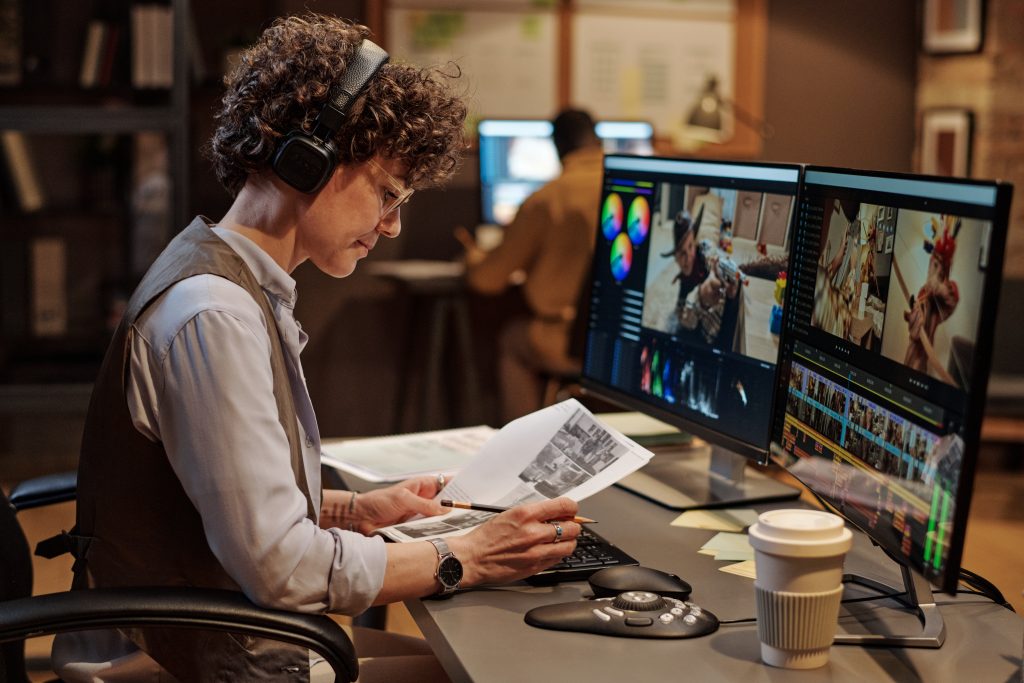As a movie lover and advocate of impactful learning, I’ve long been intrigued by the power that movies possess in engaging and captivating audiences…
The techniques that movies employ to hold our attention and evoke emotions can be powerful tools in allowing organisations to engage, motivate and drive behaviour change from their learners. Extensive research and statistics highlight the importance of implementing effective engagement strategies for learning.
For instance, the 2022 Workplace Learning & Development Trends Report states that one-third of employees find it difficult to stay motivated with their workplace training. If your employees aren’t motivated or engaged within the experience, it’s likely that upon completing the course or training programme there will be no measurable impact. Leading to individuals falling back into old behaviours, forgetting new knowledge, and failing to apply fresh skills in the workplace.
By harnessing the potential of the techniques used in movies, we can revolutionise the way people learn and absorb information, resulting in transformative learning that delivers ROI.
The power of narratives
I would argue that the often-unsung hero of the film industry is the screenwriter… I could reel off dozens of Oscar-winning actors, actresses and directors but would struggle to name one single screenwriter. But the true power of the silver screen lies in the story. It’s the multi-faceted characters, complex narratives, and internal rollercoaster we experience when sitting through a piece of cinema that provides a powerful vehicle for our investment. Yes, every element of the industry has its role to play, but without the story acting as a foundation, generating a genuine long-lasting impact would be much harder to achieve.
If we can capture this delicate art of weaving intricate narratives into the learning process, then we have the opportunity to significantly enhance the overall experience, making it more immersive and actually embedding the change you want to see as a result.
For example, let’s consider the movie “Sliding Doors”. In this movie, the main character experiences two parallel storylines based on whether she catches a train or misses it. This narrative structure served as an inspiration for the development of Saffron’s award-winning Barrick Gold Code of Conduct course. The course presents learners with a range of ethical and conduct concerns and challenges them to make critical decisions that lead to different outcomes.
By exploring the consequences of their choices, the learner actively participates in the narrative and gains a deeper understanding of the impact their decisions have; not only on the company’s reputation and success, but also on the very real dangers that wrong choices can trigger within Barrick’s workplace. This approach allows learners to personally experience the application of the concepts within the context of the story to move beyond basic knowledge transfer.
Learners are not passive participants in the workplace, so there should be a strong focus on the practical application of skills. When learners are invested in the narrative and are provided with time, space, and opportunities to practice and witness the outcomes of their choices, they can effectively apply the skills they have acquired. This active involvement enables them to learn from both successful and unsuccessful outcomes, ultimately fostering a comprehensive understanding.
Emotional engagement
Movies have the ability to evoke a wide range of emotions within us and those emotions play a significant role in how we remember and process information. The emotional enhancement of memory hypothesis suggests that emotional experiences are more effectively encoded and retained in our memory. By incorporating these principles into our L&D strategies, we can transform the way we educate and empower learners.
By acknowledging the profound impact of emotions on memory and leveraging this connection, we can create more engaging, meaningful, and effective learning experiences that resonate with individuals on a deeper level.
Effective communication
Movies excel at communicating effectively, and effective communication is equally vital in learning. Drawing inspiration from cinema, we can employ various techniques to enhance the way we deliver key knowledge and skills within learning.
Visual storytelling through multimedia elements such as videos, infographics, and interactive graphics can effectively convey complex concepts. Additionally, dialogue-based scenarios can simulate real-life conversations and allow learners to practice their skills.
Additionally, if we structure learning courses in a similar way to the pacing and structure of movies, we can create a sense of progression while tapping into our intrinsic human desire to see things through to completion. Just as we are compelled to finish a captivating movie, our nature impels us to pursue knowledge until its narrative reaches a satisfying conclusion. By dividing courses into modules or sections, each thoughtfully building upon the previous one, learners can satisfy their curiosity as they anticipate the learning unfolding before them.
By deliberately integrating curiosity as a strategy to captivate and inspire learners throughout their educational journeys, we can significantly enhance their consistent engagement.
Considering potential drawbacks
While storytelling can add great value to the learning experience, it is important to use it with careful consideration and with a clear plan for achieving desired outcomes.
One potential drawback of storytelling lies in its potential to divert attention from the key learning objectives. If storytelling elements overpower the educational content, it can diminish the effectiveness of the learning experience and hinder the retention of key information.
Therefore, striking a balance between engaging storytelling and prioritising learning outcomes is crucial. When using storytelling techniques, it is essential to ascertain the key focus and objectives for the learning beforehand. This involves setting clear expectations and aligning them with the storytelling approach.
It is also important to establish a method of measuring the ROI. By determining how to assess the impact of the learning experience, organisations can evaluate the effectiveness of the narrative elements in supporting and reinforcing the learning content. Periodic assessment allows for continuous improvement and optimisation of storytelling techniques.
Final thoughts
By harnessing techniques used in movies whilst being mindful of their potential drawbacks, we can create learning solutions that go beyond mere knowledge transfer. By integrating narratives, emotional engagement, and effective communication techniques, we can effectively overcome the challenge of engaging our learners and provide them with immersive and impactful learning experiences that empower them.








